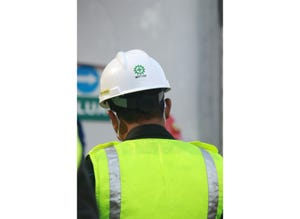Retrofit the Existing Bin or Build a New One?
August 20, 2013

As our economy continues to be erratic, companies are resorting to retrofitting existing equipment. This is not an entirely bad decision, because retrofitted equipment can perform quite reliably if done properly. I have spent years as a consultant modifying existing bins and feeders to improve flow and solve difficult flow problems. I would estimate that about 65% of my work involves retrofits.
However, sometimes it is more practical to just build a new bin and feeder. An application I worked with recently required just that. The product was being handled in a square bin that was in an awkward location and was experiencing segregation problems. It was more advantageous to remove the troublesome equipment than to fix it. Providing a new bin in a different location was less expensive than modifying the existing bin.
Retrofitting existing equipment requires a practical, common sense approach, along with knowledge of your material flow properties. It is easy to say "well, just cut this portion off and replace it with this better design", but, consider the effect on other equipment in the area, cost, downtime, etc. There are many ways to retrofit existing equipment and it depends on identification of problem areas, your material’s flow properties, area and height constraints, and cost. In a power plant, retrofits improve efficiency, increase output, and reduce emissions. In a chemical plant, retrofits not only improve efficiency but also production and safety.
Types of retrofits include hopper modifications, flow aids, inserts, proper feeder design, liners etc. Hopper modifications may require replacing conical hoppers with wedge-type hoppers (transition or chisel hoppers). These geometries use shallower hopper slopes and smaller openings than cones. Additionally, flow aids can be used, such as vibrators, air blasters, fluidizing nozzles, etc. Inserts such as a cone-in-cone design are used to modify existing funnel flow bins to ensure mass flow. By placing a cone inside an existing shallow cone, which experiences funnel flow, the inner cone (open at the top and bottom) will force material to flow along the walls of the formerly too shallow outer cone.
Many flow problems are caused by improperly designed feeders. The feeder must work in unison with the bin above to ensure reliable flow. Consider a typical application using screw feeders. A common approach is to use constant pitch flights that basically provide no increase in capacity which causes your material to flow preferentially from this bin. The key to screw feeder design is to increase the screw's capacity in the discharge direction, allowing uniform material withdrawal. In order for the feeder to be successful, the bin must also allow material to flow properly. Adding a liner such as 2B stainless steel, TIVAR88, epoxy coatings, etc. can improve flow.
A new column recently launched at www.powderbulksolids.com, entitled “Powder Perspectives”, offers solutions to common solids handling problems, including retrofits. It contains: information that you can use to identify the cause of a particular problem you are experiencing; practical solutions to common handling problems; articles by guest writers to expand our coverage to all areas of powder handling; timely information on new technology that will allow you to develop a higher level of expertise; the ability to respond to a discussion or concept with your expertise and enhance the site's content.
In summary, the science of powder and bulk solids handling, developed by Dr. Andrew Jenike, provides powerful information you can use to determine how to develop practical bin retrofits or provide new bin and feeder designs to ensure reliable solids flow.
Joseph Marinelli is a consulting engineer and president of Solids Handling Technologies. He has been providing testing and consulting services since 1972. As a former consultant with Jenike & Johanson Inc., he has years of experience testing powders and designing bins and feeders for reliable flow. He lectures frequently on the topic of powder handling and has published several papers including and article in a chemical encyclopedia and two in a food powder book.
For more articles from Joe Marinelli, visit Powder Perspectives
You May Also Like


